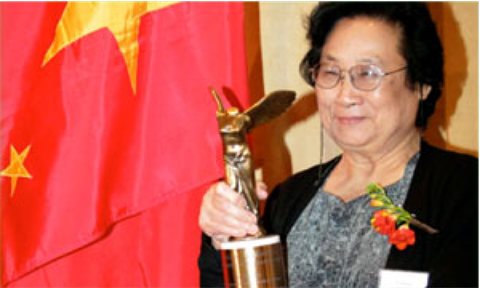Can Ayurveda co-exist with modern medicine?
Ayurveda is an ancient form of preventative medicine that focuses on nurturing the body to promote good health and longevity, rather than fighting diseases.
Ayurveda is an ancient form of preventative medicine that focuses on nurturing the body to promote good health and longevity, rather than fighting diseases. Although Ayurveda has recently seen gains in popularity around the world, as an export industry it has as yet failed to make a significant global impression.
Against a background of growing interest in natural remedies, how can businesses in Asia capitalise on Ayurveda’s pure, authentic reputation?
What is Ayurveda?
The term Ayurveda can be loosely translated from Sanskrit as “life knowledge”. Its practice draws on a variety of healing therapies such as herbal remedies, massages, dietary interventions and movement practices such as yoga, designed to target the body, mind and spirit.
Ayurvedic products are made either from single herbs or a combination of herbs, metals, minerals, and other ingredients. If followed correctly, Ayurvedic treatments should be free from side effects and help to support a happy, disease-free life. However, as with any unregulated herbal treatments there are risks of side effects or toxicity, especially when self-medicating.
Ayurveda has become a niche lifestyle choice around the world, and well established in some foreign markets through increasing awareness of its core treatment methods: the use of herbs and spices, a healthy diet and a healthy routine.
The Ayurveda industry
India is considered the birthplace of Ayurveda and is the global centre of the practice. The Indian Ayurveda market is worth approximately US$1 billion and is projected to grow at a rate of 10–15% for the next ten years. There are around 450,000 Ayurveda practitioners, 250 colleges, 8,500 pharmacies and 7,000 manufacturers in India (KPMG, 2014). In 2013-14, Annual exports of Ayurvedic medicines were US$126 million; however, this was just a small fraction of India’s pharmaceuticals exports for the same period, worth over US$11 billion. To stimulate growth in the sector the Indian government has established the All India Institute of Ayurveda to provide professional education in Ayurveda, and the Central Council for Research in Ayurvedic Sciences to carry out research.
Ayurveda is practiced in many Asian countries such as Bangladesh, Japan, Malaysia, Maldives, Myanmar, Nepal, Singapore, Sri Lanka and Thailand. In Japan, the study, research and practice of Ayurveda has thrived for more than thirty years. Ayurveda treatment and products are also available in North and South America, many Northern European countries and South Africa. Germany accounts for half of the exports of Ayurveda products from India.
The Ayurveda industry’s main challenge is to sustain its traditional system of medicine alongside modern medical science. There is an opportunity to promote traditional methods within the scientific community and show that herbal methods can support and inspire modern medicine. According to Patwardhan (2010), scientists in many disciplines from different parts of the world are investigating the potential of Ayurveda, including issues related to epistemology, pedagogy, the importance of a balance between Shastra (traditional Indian knowledge) and science, and the need for novel research approaches and inter-system validation.
Collaborations with medical science
Emerging commonalities between biomedicine and Ayurvedic science have proven to be the most exciting. Rastogi (2014) provides details of a treatment plan involving Ayurvedic oral medications as well as pancha karma procedures (a fivefold Ayurvedic detoxification treatment involving massage and herbal therapy) in patients suffering from traumatic spinal cord injury. Joshi & Bhonde (2014) investigated the role of Ayurveda in stem cell research and conducted successful experiments using Medhya (a group of medicinal plants that improve memory and intellect) drugs on tissue regeneration and cell renewal. Brahma rasayana (a herbal jam used to treat stress and tiredness) has been shown to be myeloprotective against chemotherapy and radiotherapy in cancer patients and the use of this nontoxic preparation as an adjuvant in cancer therapy will prove to be highly beneficial (Garodia, Ichikawa, Malani, Sethi, & Aggarwal, 2007). Rhoda (2014) explored the application of Ayurveda in psychology and concluded that Ayurvedic psychology could provide a more comprehensive approach to psychological health by offering an individualised, doshic (the three bodily bio-elements: air, fire and water) system of healing, unique therapeutic modalities, and targeted botanical medicines to support psychological wellbeing. All these experiments require serious collaborations between biochemists, molecular biologists, geneticists, epidemiologists, physiologists, and physicians, both Ayurvedic and modern medical practitioners. A multidisciplinary approach can be advantageous since it can potentially lead to novel paradigms for modern personalised medicine (Sumantran & Tillu, 2013).
Given that students and practitioners of Ayurveda lack exposure to advances in the various modern medical systems, a new breed of Ayurveda practitioner-scientist is needed. The lack of critical analysis or innovation in Ayurveda training has pushed the quest for deeper knowledge and understanding to the back seat. Training young Ayurveda teachers as practitioner-scientists and priming them to work as agents of change is an urgent need. Practitioner-scientists need rigorous training in the shastras (sacred scriptures), science and medicine, along with exposure to appropriate research methodology (Patwardhan, Joglekar, Pathak, & Vaidya, 2011).
For a new era of integrated medical practice to begin, biomedical practitioners must also become knowledgeable about traditional medicine and be encouraged to collaborate with Ayurvedic practitioners as part of regular patient care. It is paramount that Ayurveda scholars and experimental scientists collaborate and evaluate classic therapies and medicines. Rethinking research models and drug administration protocol will prove important for rediscovering therapies implied in classical Ayurveda (Spudich & Menon, 2014).
The opportunity
Global warning and environmental issues are prompting many to adopt a holistic way of life; to gain an understanding of nature and traditional remedies. The popularity of Yoga and Ayurveda in the West and the influx of European tourists to India and Sri Lanka for wellness treatments suggests that there is very real potential for growth in this industry. However, Ayurveda as an alternative form of medicine has yet to fulfil its potential compared to the success and acceptance of Yoga or Traditional Chinese Medicine (TCM). Collaboration with Western medical practitioners and the integration of scientific methods could help Ayurveda fulfil this potential and reach a wider audience.
It will require concerted effort and significant investment to make Ayurveda a future global wellness trend. Despite TCM’s relative success the industry has an image problem, which limits its global appeal. While its traditional form of herbal medicine appeals to many, others are put off by its use of endangered animal products and the risk of contaminated products from China. Ayurveda draws on many of the same principals and appeals to similar consumers in the West, but it does not have the negative baggage associated with TCM. This could be an opportunity for Ayurveda practitioners, philanthropists, NGOs and the wellness industry to position Ayurveda as a pure, sustainable form of holistic medicine.
Lifestyle companies, research firms and pharmaceutical organisations could leverage this point of difference and help to generate interest in Ayurveda and India. Academia and research students could initiate deeper studies to discuss commonalties between Ayurveda and the various traditional forms of medicine found in Asia. This novel, cross-discipline approach to research could help to discover new forms of treatment.
According to Gokani (2014), the Vedic civilisation in Southeast Asia migrated south to create Ayurveda and north to create Traditional Chinese Medicine and Homeopathy. This claim may be worth further investigation and research, if validated it will be of great significance to Southeast Asia. Singapore could become a knowledge hub for traditional medicine and form the Asian Institute of Integrative Medicine. The institute’s mission would be to facilitate the collaboration of modern medicine with all forms of traditional Asian medicine.
Ayurveda has a place in history as one of the oldest forms of healthcare, but it cannot live in the past. Ayurveda must evolve to become relevant again and appeal to an international audience. It the current global climate, there is an opportunity for a completely natural, sustainable, harm-free form of healthcare to complement and inspire medical science. With the right strategy and investment Ayurveda could one day dominate alternative medicine.
About the author
The authors are alumni of the ACI-NTU Masters of Marketing and Consumer Insight – an Executive Education program targeting individuals with over 5 years’ industry experience and looking to expand their marketing and consumer insight knowledge, particularly with respect to the Asian markets. Ajish Henry Morris is Regional Manager Southeast Asia at Jetstar Airways and has gained extensive experience in Southeast Asia region, having lived and worked in Singapore, Indonesia, Thailand, the Philippines and Myanmar. Rabin Ranji works as Senior Manager - Sales and Marketing with STEi Singapore. He has been working in the Singapore education sector for the last 9 yrs in various capacities, prior to which he was in Middle East and India. Ajay H Dattani is General Manager at Goodrich Maritime L.L.C,Dubai. He has been in the Dubai Shipping and Logistics sector for last 10 years prior to which he was in India.
References
Garodia, P., Ichikawa, H., Malani, N., Sethi, G., & Aggarwal, B. (2007). From ancient medicine to modern medicine: Ayurvedic concepts of health and their role in inflammation and cancer. Journal of the Society for Integrative Oncology, 5(1), 25-37.
Gokani, T. (2014). Ayurveda - The Science of Healing. Headache: The Journal Of Head & Face Pain, 54(6), 1103-1106. Joshi, K., & Bhonde, R. (2014). Insights from Ayurveda for translational stem cell research. Journal of Ayurveda and
Integrative Medicine, 5(1), 4-10.
KPMG. (2014). Medical Value Travel in India. Retrieved from
https://www.kpmg.com/IN/en/IssuesAndInsights/ArticlesPublications/Documents/KPMG-FICCI-Heal-Sep2014.pdf
Mariakhina, E. (2014, October 13). An Ancient Science in Modern World – Ayurveda. Retrieved from http://www.watkinsmagazine.com/ayurveda-interview-with-dr-jayarajan-kodikannath
Patwardhan, B. (2010). J-AIM - A renaissance for ayurveda. Journal of Ayurveda and Integrative Medicine, 1(1), 1-2. doi:http://dx.doi.org/10.4103/0975-9476.59816
Patwardhan, B., Joglekar, V., Pathak, N., & Vaidya, A. (2011). Vaidya-scientists: catalysing Ayurveda renaissance. Current Science, 100(4), 476-483.
Rastogi, S. (2014). Rehabilitative potential of Ayurveda for neurological deficits caused by traumatic spinal cord injury. Journal of Ayurveda and Integrative Medicine, 5(1), 56-9.
Rhoda, Daniel. (2014). Ayurvedic Psychology: Ancient Wisdom Meets Modern Science. International Journal of Transpersonal Studies, 33(1), 158-172.
Spudich, A., & Menon, I. (2014). On the integration of Ayurveda and biomedicine: perspectives generated from interviews with Ashtavaidya Ayurveda physicians of Kerala. Current Science, 106(11), 1500-1504.
Sumantran, V., & Tillu, G. (2013). Insights on Personalized Medicine from Ayurveda. Journal Of Alternative And Complementary Medicine, 19(4), 370-375.





.tmb-listing.jpg?Culture=en&sfvrsn=41c3e350_1)
.tmb-listing.png?Culture=en&sfvrsn=d48abb4_1)
